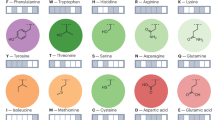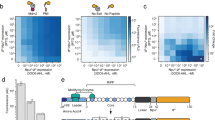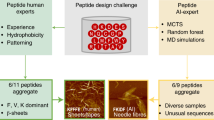Abstract
Molecular mass of a biomolecule is characterized in mass spectroscopy by the monoisitopic mass M~mono~ and the average isotopic mass M~av~. We found that peptide masses mapped on a plane made by two parameters derived from M~mono~ and M~av~ form a peculiar global feature in form of a band-gap 5-7 ppm wide stretching across the whole peptide galaxy, with a narrow (FWHM 0.2 ppm) line in the centre. The a priori probability of such a feature to emerge by chance is less than 1:100. Peptides contributing to the central line have elemental compositions following the rules S=0; Z = (2C - N - H)/2 =0, which nine out of 20 amino acid residues satisfy. The relative abundances of amino acids in the peptides contributing to the central line correlate with the consensus order of emergence of these amino acids, with ancient amino acids being overrepresented in on-line peptides. Thus the central line is a relic of ancient life, and likely a signature of its emergence in abiotic synthesis. The linear correlation between M~av~ and M~mono~ reduces the complexity of polypeptide molecules, which may have increased the rate of their abiotic production. This, in turn may have influenced the selection of these amino acid residues for terrestrial life. Assuming the line feature is not spurious, life has emerged from elements with isotopic abundances very close to terrestrial levels, which rules out most of the Galaxy.
Similar content being viewed by others
Article PDF
Author information
Authors and Affiliations
Corresponding author
Rights and permissions
About this article
Cite this article
Zubarev, R., Artemenko, K., Zubarev, A. et al. Early Life Relict Feature in Peptide Mass Distribution. Nat Prec (2008). https://doi.org/10.1038/npre.2008.2402.1
Received:
Accepted:
Published:
DOI: https://doi.org/10.1038/npre.2008.2402.1



